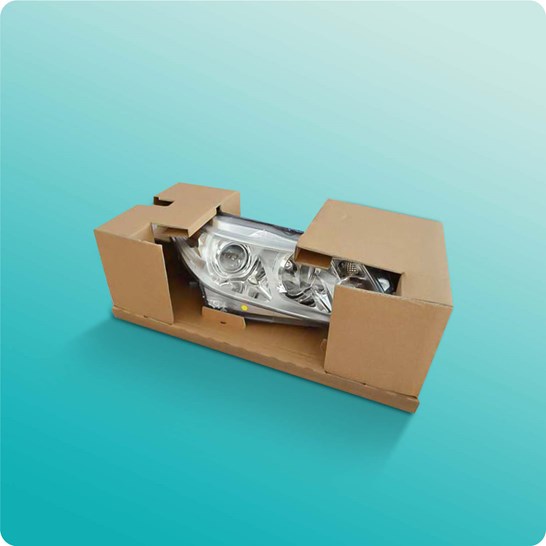High quality in Every Mold And Mildew: Plastic Container Manufacturer Know-how
Wiki Article
Reliable Industrial Recycling Solutions for Sustainable Packaging: A Comprehensive Guide
In today's progressively environmentally-conscious world, the need for lasting product packaging remedies has actually never ever been higher. To meet this demand, services across sectors are actively seeking reliable commercial recycling options. Nonetheless, browsing the complicated landscape of sustainable product packaging can be challenging without a thorough overview. That's where this thorough guide on reliable industrial recycling services for lasting packaging comes in. By exploring vital locations such as product packaging material selection, creating for recyclability, implementing recycling facilities, working together with recycling partners, and tracking and determining recycling success, this overview will furnish you with the expertise and tools needed to make educated decisions and drive positive adjustment within your organization. Whether you're a product packaging specialist, sustainability manager, or merely interested in the subject, this guide will certainly supply valuable understandings and techniques to assist you browse the world of lasting packaging.Packaging Material Choice
The choice of packaging products plays a crucial role in making sure the sustainability of commercial recycling solutions. The choice of materials is key in reducing ecological effect and optimizing recycling effectiveness when it comes to lasting product packaging. Picking the best materials can help in reducing waste generation, conserve resources, and advertise a circular economy.One essential variable to consider in packaging product option is recyclability - bulk container recycling. Materials that can be quickly reused and included back into the production cycle are liked. Materials like cardboard, paper, glass, and specific types of plastics can be recycled multiple times without losing their quality. On the other hand, products that are challenging to recycle, such as mixed plastics or non-recyclable composites, can develop challenges for the reusing process and might finish up in land fills or incinerators.
Another factor to consider is using sustainable and naturally degradable materials. Product packaging made from renewable energies, such as plant-based plastics or biopolymers, can aid decrease dependence on fossil fuels and mitigate climate change. Furthermore, eco-friendly products break down naturally over time, reducing the buildup of waste in land fills.
Furthermore, the weight and volume of packaging materials ought to be reduced to lower transport costs and power intake. Lightweight products not only call for less sources throughout production but likewise add to reduce carbon emissions during transport.
Creating for Recyclability
Product packaging developers need to focus on the use of materials that are extensively approved for reusing and have established recycling frameworks. Materials such as glass, aluminum, and particular types of plastic, like Animal and HDPE, are generally recycled and need to be preferred over materials that are challenging or costly to reuse.Another important factor to consider in developing for recyclability is the elimination of unneeded components or materials. By lessening the variety of layers, finishes, and additional parts, packaging can be made simpler and less complicated to reuse. Furthermore, developers should aim to reduce the usage of combined products, as they can complicate the recycling process.

Implementing Recycling Framework
Effective execution of recycling framework is vital for the success of industrial recycling solutions. Without correct infrastructure in position, the reusing procedure ends up being inefficient and ineffective, preventing the overall objective of sustainable product packaging.To carry out recycling infrastructure properly, numerous key factors require to be thought about. First of all, there need to be a well-organized collection system that helps with the separation and collection of recyclable materials. This can consist of assigned reusing containers in public rooms, in addition to partnerships with waste monitoring companies for curbside pickup and sorting.
As soon as collected, the recyclable products need to be carried to recycling centers in a prompt manner. This requires effective logistics and transportation networks, making certain that the products reach the suitable centers right away.
At the recycling facilities, advanced sorting and processing technologies need to remain in place to divide various sorts of materials effectively. This includes using automated arranging makers, optical scanners, and manual sorting methods.
Additionally, there should be a durable market demand for recycled products. This can be achieved with partnerships with producers and industries that utilize recycled products in their production processes. Developing a stable market for recycled materials incentivizes the recycling industry and advertises the round economic climate.
Working Together With Recycling Partners

One trick facet of working together with reusing companions is the facility of clear interaction networks. It is important to develop open lines of communication to assist in the exchange of info, updates, and responses. This enables both celebrations to stay educated concerning the development of reusing efforts and attend to any type of challenges or issues that may emerge.
In addition, partnership can involve collaborations in executing and designing recycling programs. Recycling partners can supply valuable understandings and guidance in developing efficient collection systems and figuring out the most proper recycling modern technologies. By functioning together, organizations and recycling companions can optimize the reusing procedure and minimize waste.
Additionally, partnership can extend beyond the operational elements of recycling. It can additionally incorporate campaigning for and education and learning initiatives. By signing up with forces, organizations and reusing partners can elevate understanding about the importance of recycling and promote the fostering of lasting packaging techniques among consumers and various other stakeholders.
Tracking and Measuring Recycling Success
To make certain the performance of commercial recycling options and the achievement of lasting product packaging goals, it is critical for services and their reusing partners to establish a detailed system for monitoring and measuring recycling success (bulk container recycling). Measuring and tracking recycling success permits services to evaluate the impact of their reusing initiatives, recognize locations for renovation, and set significant targets for future developmentOne means to track reusing success is via using data collection and evaluation tools. By collecting information on the amount of packaging waste created, the percent of waste that is reused, and the kinds of products being reused, organizations can gain useful understandings right into their reusing efficiency. This data can after that be evaluated to identify trends, patterns, and locations of inefficiency.
One more vital aspect of monitoring and determining reusing success is establishing clear and standardized metrics. This permits companies to compare their efficiency against sector benchmarks and track their progress gradually. Metrics such as reusing rates, waste diversion prices, and greenhouse gas discharges can provide a measurable measure of a service's recycling success.

Final Thought
To conclude, applying reliable commercial recycling options for sustainable product packaging needs mindful consideration of product packaging material choice, creating for recyclability, carrying out reusing infrastructure, teaming up with industrial packaging solutions recycling partners, and tracking and determining recycling success. By including these practices, companies can add to a more sustainable and environmentally-friendly technique to product packaging, reducing waste and advertising the round economic climate.By discovering crucial areas such as packaging material option, designing for recyclability, applying recycling infrastructure, working together with reusing companions, and monitoring and measuring reusing success, this guide will certainly equip you with the expertise and tools essential to make enlightened choices and drive positive adjustment within your organization. Packaging designers ought to prioritize the use of products that are commonly accepted for reusing and have developed reusing facilities.Cooperation with recycling companions is crucial for the effective implementation of commercial reusing services and the success of sustainable packaging goals. By joining forces, businesses and reusing companions can elevate awareness concerning the relevance of reusing and advertise the fostering of lasting product packaging methods among customers and other stakeholders.
By collecting information on the quantity of packaging waste produced, the percent of waste that is reused, and the types of materials being recycled, services can obtain important understandings into their reusing performance.
Report this wiki page